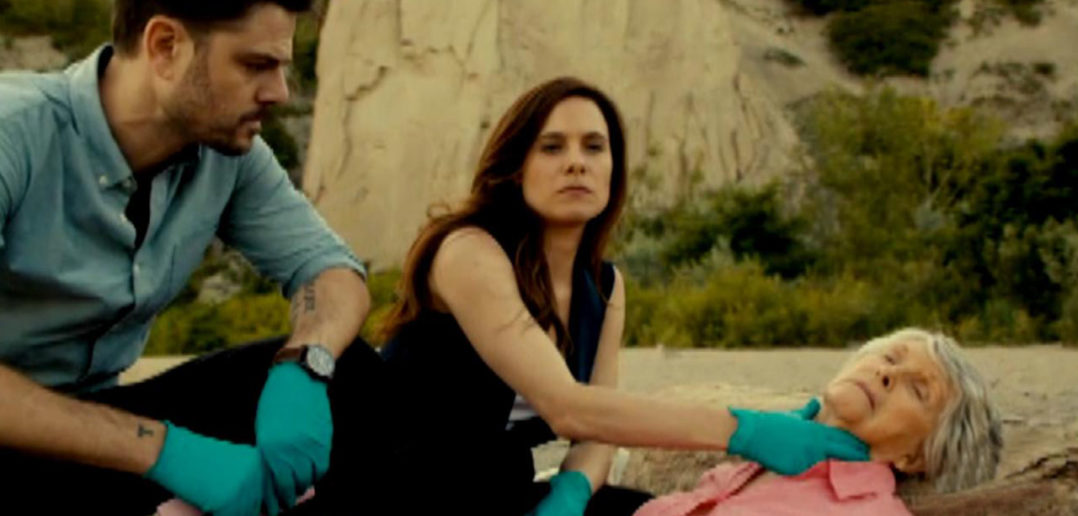When I first decided to review Mary Kills People, I was under the impression that it was just a show about a female serial killer starring Hannibal‘s Caroline Dhavernas, and I was very, very much about it. I have a soft spot for trashy horror and intricate narratives that delve into what drives women to kill. Whether it is a story of situation and self preservation, or the rare cases of women who actually choose to kill, there is something about this absolute breaking from societal roles that has always intrigued me. But Mary Kills People is a very different show, one that struck far more personal notes than I could have expected.
The show focuses on Mary, a successful doctor and loving-if-distracted mother who provides an extra service to special clients. As the title suggests, Mary kills people. A stylish if shallow meditation on euthanasia, this show tackles an issue that actually affects many, many people as if it’s nothing more than a cool idea someone came up with in a pitching meeting, and it shows. That’s not to say that Mary Kills People isn’t good or enjoyable. In fact, I’m sure for the many people who haven’t ever had to consider whether or not their life is worth living, this may seem like a timely show on a pertinent topic.
But as a disabled woman I found this show a little difficult to watch. The conversation about euthanasia is one I’ve been actively engaged with since I was young, able bodied (I became epileptic at age 16), and heavily involved with inclusion activism. A strong advocate for legalising euthanasia when I was young and idealistic, as I grew older my viewpoint rapidly changed. Growing up in the UK, a country wrought by poverty and horrific government austerity policies, the conversation around euthanasia was one that constantly evolved. Though the idea that everyone should be able to control their own life and death is one I still stand by, the act itself is far more complex.

This first episode opens with Mary unsuccessfully attempting to euthanize a black man with an unspecified illness using the barbiturate, pentobarbital. When this doesn’t work she has to smother him as his wife comes home. This is a brutally uncomfortable scene. In a show based around the idea of bodily autonomy, a white doctor using a medical drug to attempt to kill a black man—when historically medicine has encouraged experimentation and exploitation of black bodies—is a tone deaf opening that sets up the uninformed, trivial world of the show. The episode always focuses on Mary and never on those who she’s helping to die, never about the choices that lead there aside from “I’m dying and I want to die faster” and that is where the show ultimately loses it’s way.
The real world context of euthanasia is complex. It’s one based on the idea of true bodily autonomy, but is steeped in ableism and what disability activists call “the medical model” of disability. This is the idea pushed by the medical world that your life is worth less, or of a lesser quality, if you’re disabled — disability is what causes a decline in quality of life, rather than considering that an ableist society also plays a hand. The fears of some disabled people about legalised euthanasia recognize that in a world where we are already deemed as lesser, and our lives less worth living, legislation that would enable people who want to die could easily be manipulated to kill those who want to live.

Mary Kills People barely scratches the surface of its main premise and in a way that may end up being to its benefit. This first episode introduces a lot of potential conflict: the barbiturate dealer suspects that something is up, Mary’s queer daughter (yay for some casual teen queer rep) discovers her mother’s secret box of drugs and burner phone. If the show decides to follow this route and focus more on the potential exposure of Mary’s definitely illegal and morally questionable second job — and it is likely with the third act reveal that a shady government agency is on to Mary — it may turn out to be a solid thriller that gains a good following for its strong cast and interesting direction. But if the show continues to centre simply on Mary killing people, without an exploration of their motivations, their underwhelming, almost inconsequential deaths nothing but a MacGuffin, it will cross the line into irresponsible exploitation.
The show is at its base problematic as it centres the emotional journey of a rich, able bodied white woman rather than giving that time and space to the people who are dying. The visual context of that alone is troubling, and I think it’s because of this that the show seems to only pick people with terminal illnesses rather than chronic or long term degenerative ones. It distances itself at every opportunity from the real conversation around euthanasia and it’s real world ramifications, which makes it have far less impact than it potentially could have.

